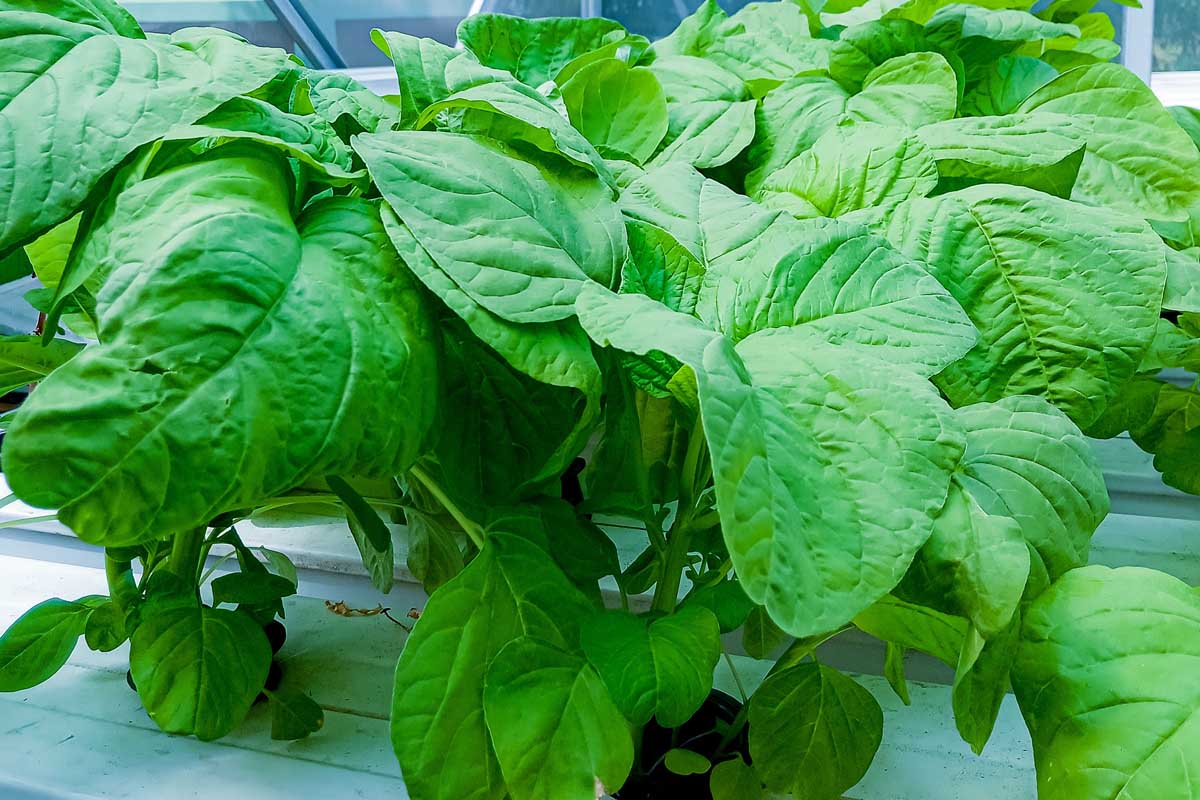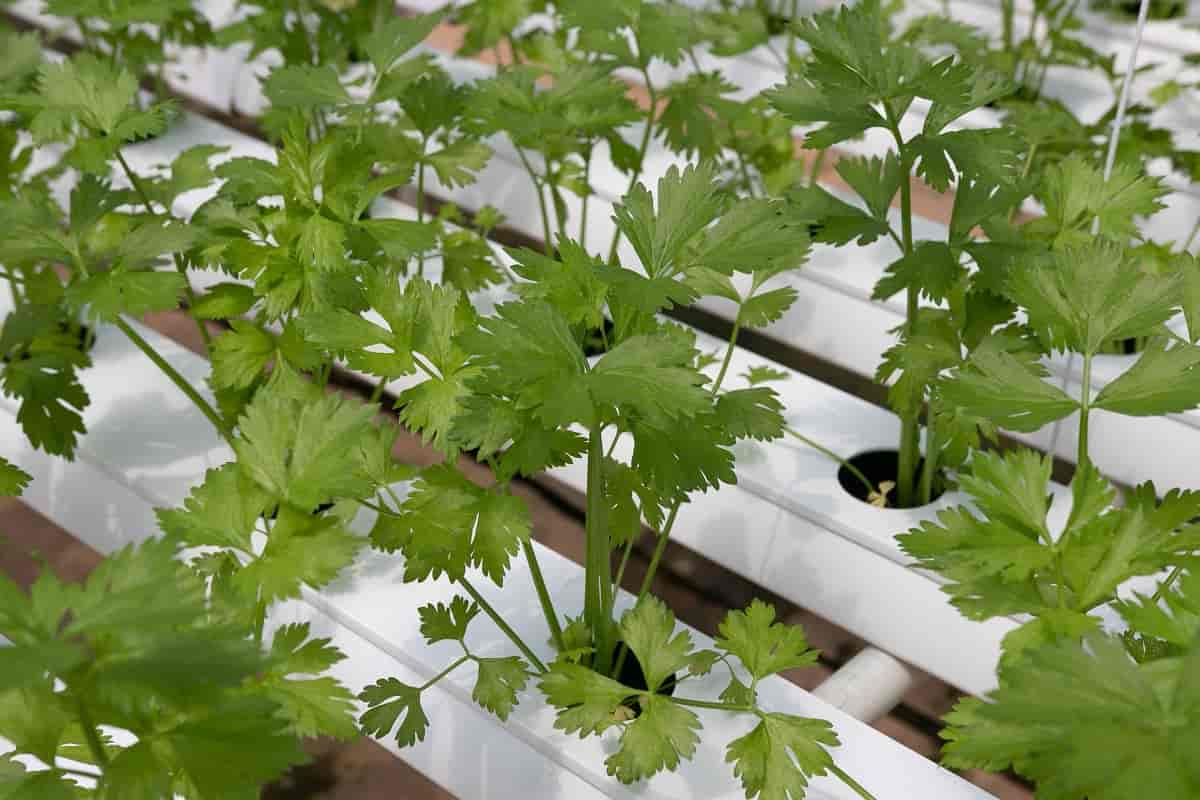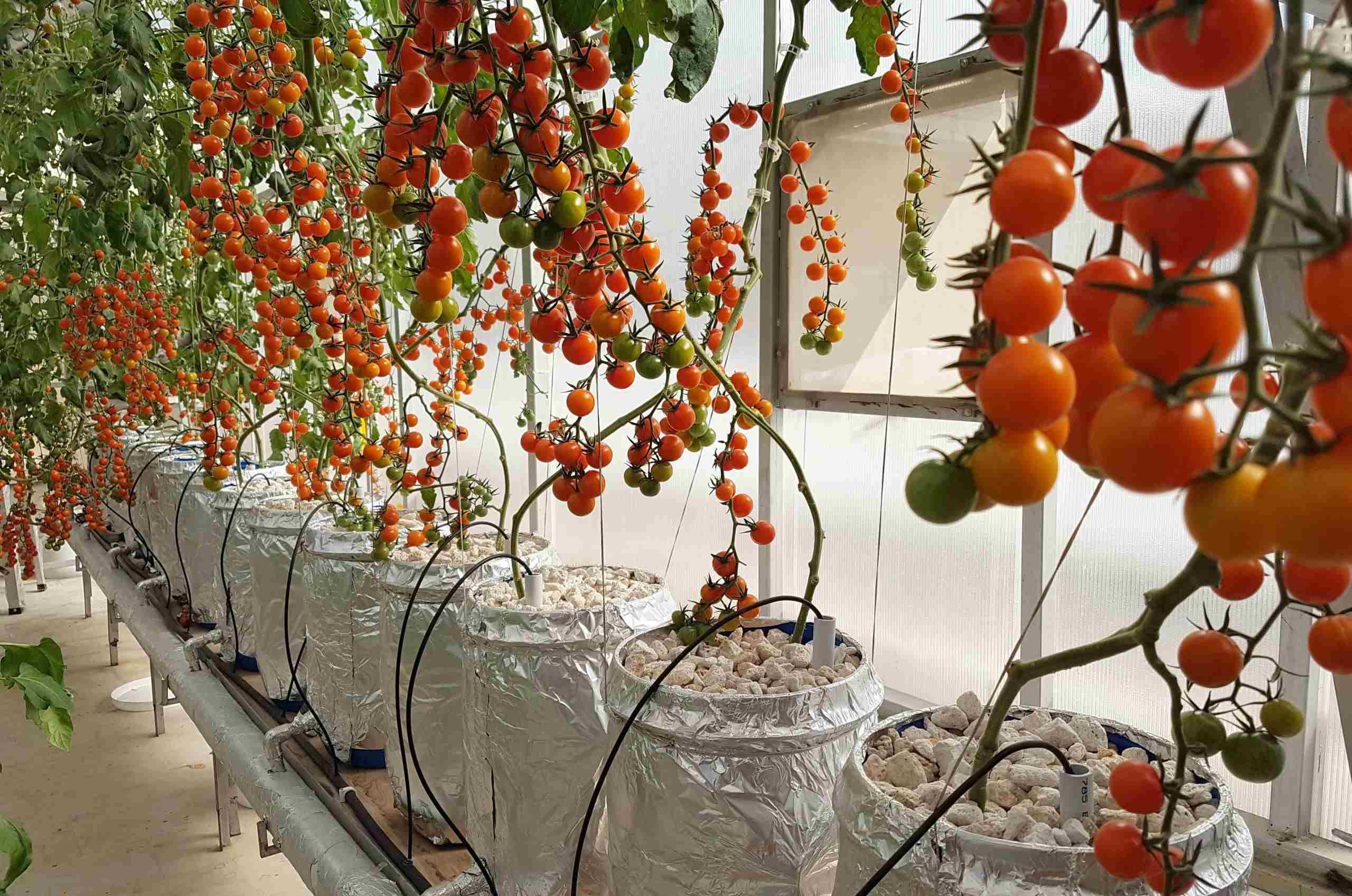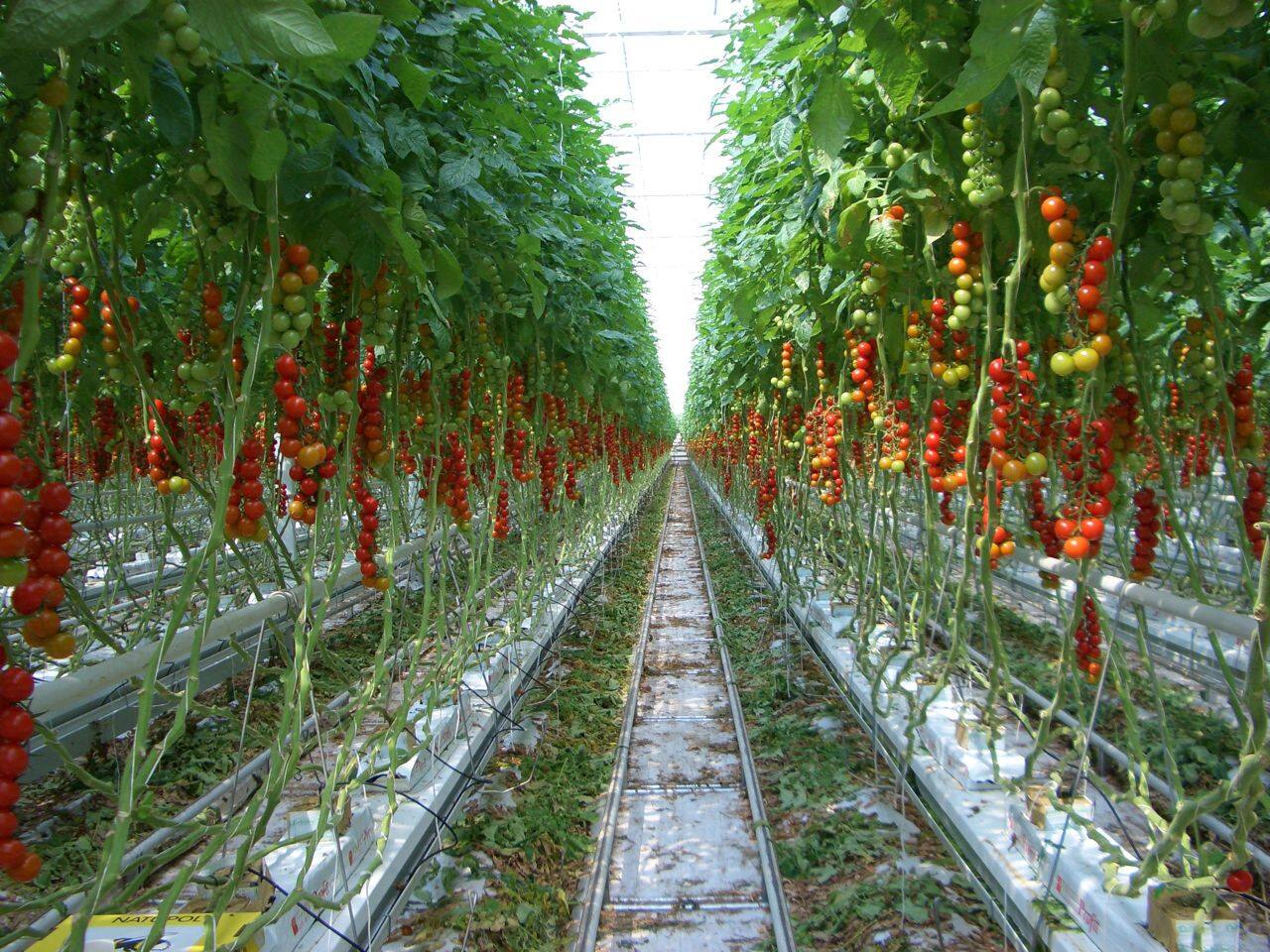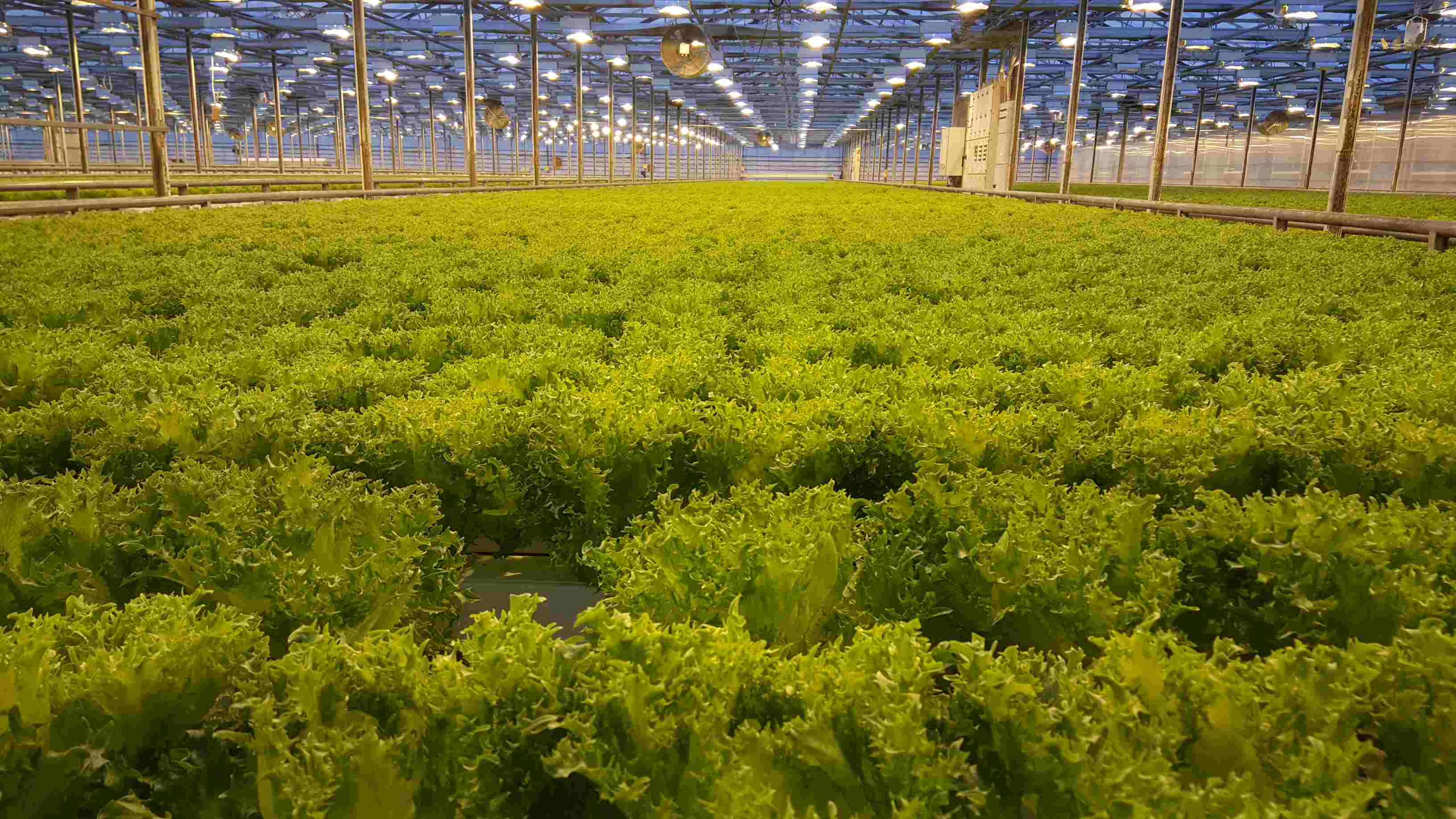Home>Gardening Basics>Getting Started>How To Start Growing Hydroponics
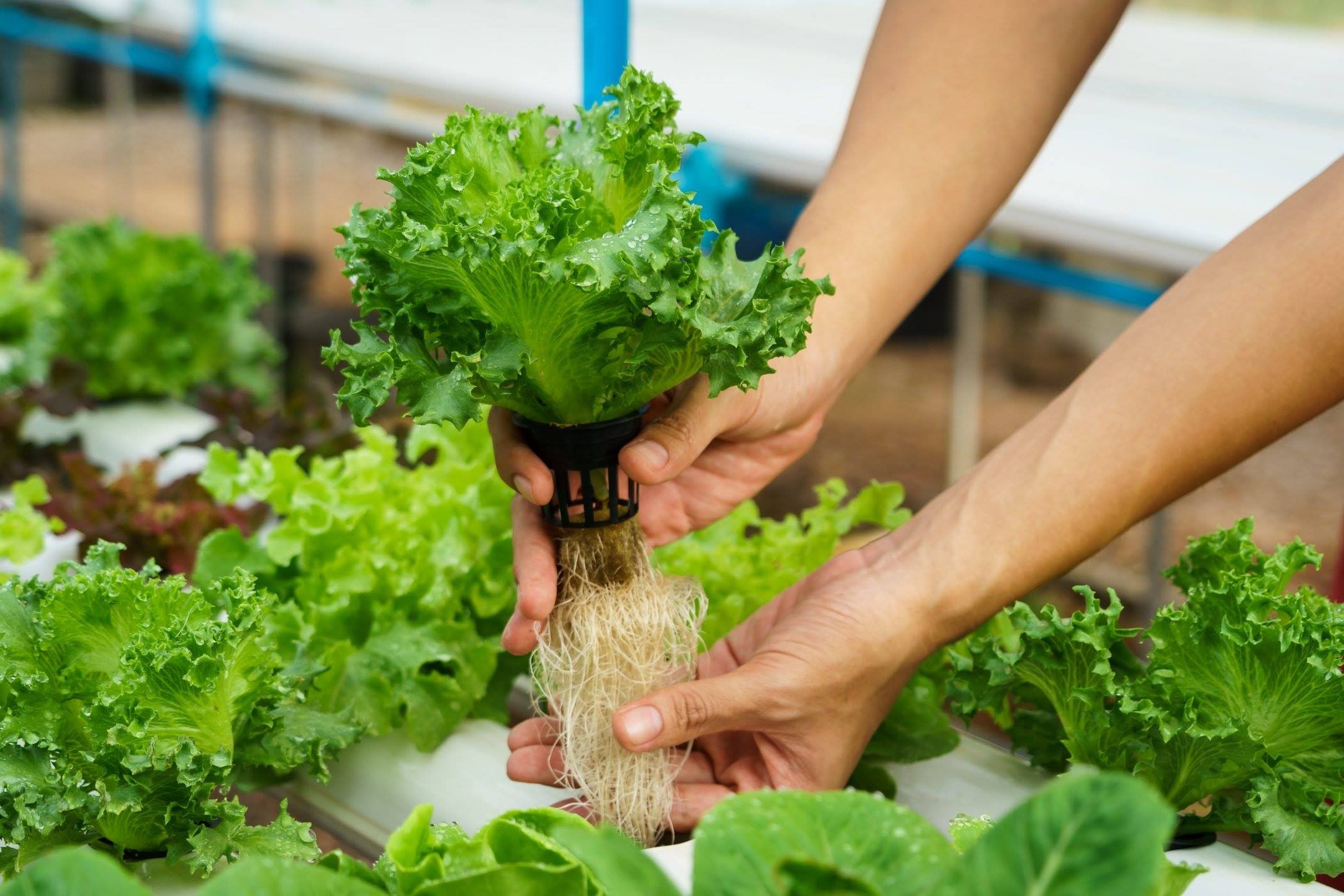

Getting Started
How To Start Growing Hydroponics
Modified: January 22, 2024
Discover the best way to kickstart your hydroponic journey with our comprehensive guide! Learn all the essentials, from equipment setup to nutrient management, and start enjoying bountiful harvests in no time!
(Many of the links in this article redirect to a specific reviewed product. Your purchase of these products through affiliate links helps to generate commission for Chicagolandgardening.com, at no extra cost. Learn more)
Table of Contents
- Introduction
- What is Hydroponics?
- Benefits of Hydroponics
- Choosing the Right Hydroponic System
- Setting Up Your Hydroponic System
- Selecting the Right Plants for Hydroponics
- Providing Adequate Lighting
- Maintaining Proper Nutrient Levels
- Monitoring pH Levels
- Managing Air and Water Circulation
- Preventing and Managing Diseases and Pests
- Harvesting and Enjoying Your Hydroponic Produce
- Conclusion
Introduction
Welcome to the exciting world of hydroponics! Whether you have a green thumb or are just starting out with gardening, hydroponics offers a unique and innovative approach to growing plants. Unlike traditional soil-based gardening, hydroponics allows you to cultivate plants in a nutrient-rich water solution, without the need for soil. This method of growing has gained popularity in recent years due to its numerous benefits and the ability to grow plants in limited spaces.
In this article, we will explore the fascinating world of hydroponics and provide you with all the information you need to get started. From understanding the basics of hydroponics to setting up and maintaining your own hydroponic system, we’ll guide you through every step of the process.
Hydroponics offers a range of advantages over traditional gardening methods. Not only does it allow you to grow plants without soil, but it also requires less water, eliminates the risk of soil-borne diseases, and allows for precise control over nutrient levels. Additionally, hydroponic systems can be set up indoors or outdoors, making it possible for anyone to enjoy the benefits of gardening regardless of their living situation.
Whether you’re looking to grow fresh herbs, crisp lettuce, or vibrant flowers, hydroponics provides a sustainable and efficient method of cultivation. It’s a great way to enjoy the rewards of gardening while minimizing the challenges often associated with traditional gardening.
Ready to dive into the world of hydroponics? Let’s get started by understanding what exactly hydroponics is and how it works.
What is Hydroponics?
Hydroponics is a method of growing plants without the use of soil. Instead, plants are grown in a water-based nutrient solution, providing all the necessary nutrients directly to the plant roots. This method allows for more efficient nutrient absorption and eliminates the need for traditional soil-based gardening.
The concept of hydroponics dates back centuries, with historical evidence suggesting that the ancient Babylonians and Aztecs practiced forms of hydroponic agriculture. However, it wasn’t until the 20th century that hydroponics gained significant attention and became a popular alternative to traditional gardening.
There are several different types of hydroponic systems, each with its own unique approach to delivering nutrients to the plants. Some common hydroponic systems include:
- Deep Water Culture (DWC): In this system, plants are suspended in a nutrient-rich solution with their roots submerged in the water. Oxygen is delivered to the roots through the use of air stones or diffusers, ensuring proper respiration.
- Nutrient Film Technique (NFT): This system involves a thin film of nutrient solution continuously flowing over the plant roots, providing a constant supply of nutrients. The excess solution is collected and recirculated to minimize waste.
- Drip System: In a drip system, a timer-controlled pump delivers nutrient solution to the plants through individual drippers or emitters. The excess solution drips back into a reservoir, allowing for reuse.
- Aeroponics: This advanced hydroponic system suspends the plant roots in the air and mists them with a nutrient solution. The fine mist provides ample oxygen and nutrients to the roots, promoting rapid growth.
Hydroponics offers numerous benefits over traditional soil-based gardening. One of the main advantages is the precise control over nutrient delivery. With hydroponics, you have the ability to tailor the nutrient solution to meet the specific needs of each plant, ensuring optimal growth and yields.
Moreover, hydroponic systems use considerably less water compared to traditional gardening methods. The water used in hydroponics is recirculated within the system, minimizing water waste and making it an environmentally friendly option.
Now that you have a better understanding of what hydroponics is, let’s explore the various benefits it provides for growers and why it has become a popular choice in modern agriculture.
Benefits of Hydroponics
Hydroponics offers a multitude of benefits for both hobbyist gardeners and commercial growers. Let’s explore some of the key advantages of this innovative cultivation method:
- Optimal nutrient control: One of the biggest advantages of hydroponics is the precise control over nutrient levels. With traditional gardening, plants rely on soil nutrients, which can vary in composition and availability. In a hydroponic system, you have complete control over the nutrient solution, allowing you to optimize the nutrient balance for each plant’s specific needs. This ensures that plants receive the essential elements they require for healthy growth and maximum yields.
- Water efficiency: Water scarcity is a global concern, making it vital to conserve this precious resource. Hydroponics is incredibly water-efficient compared to traditional soil-based gardening. In hydroponic systems, the water is recirculated, reducing water consumption by up to 90% when compared to soil-based methods. Additionally, the water is delivered directly to the plant roots, minimizing evaporation and runoff.
- No soil requirements: Hydroponics eliminates the need for soil, making it suitable for areas with poor soil quality or limited space. This opens up possibilities for urban gardening, rooftop gardens, and indoor cultivation. Without soil, there is no risk of soil-borne diseases or pests, allowing for cleaner and healthier plant growth.
- Faster growth and higher yields: With hydroponics, plants have access to all the necessary nutrients, water, and oxygen, which promotes accelerated growth. As a result, plants tend to grow faster and produce larger yields compared to traditional gardening methods. Additionally, hydroponics provides ideal conditions for plants throughout their growth cycle, resulting in healthier and more vigorous crops.
- Year-round cultivation: Hydroponics allows for year-round cultivation, regardless of climate or season. By providing plants with optimal growing conditions indoors or in greenhouses, you can extend the growing season and have a continuous supply of fresh produce. This is especially beneficial in regions with harsh winters or limited arable land.
These are just a few of the many advantages that hydroponics offers. From efficient resource utilization to increased crop yields, this innovative growing method has revolutionized the agricultural industry. Whether you are a gardening enthusiast or a commercial grower, hydroponics provides an exciting and sustainable way to cultivate plants.
Now that we have explored the benefits of hydroponics, let’s move on to the next step and learn how to choose the right hydroponic system for your needs.
Choosing the Right Hydroponic System
When venturing into hydroponics, selecting the right hydroponic system is crucial for successful plant growth and efficient cultivation. There are various factors to consider when choosing a system, such as space availability, budget, and personal preference. Let’s explore some popular hydroponic systems to help you make an informed decision:
- Deep Water Culture (DWC): This is one of the simplest and most beginner-friendly hydroponic systems. Plants are suspended in a nutrient solution with their roots submerged. An air pump provides oxygen to the roots. DWC systems are effective for growing leafy greens and herbs.
- Nutrient Film Technique (NFT): NFT systems utilize a shallow channel or tube where a thin film of nutrient solution constantly flows over the plant roots, providing a continuous supply of nutrients. This method is suitable for growing small, lightweight plants with non-woody stems.
- Drip System: Drip systems involve periodically dripping nutrient solution onto the base of the plants. This method is versatile and widely used. It allows for a high degree of customization and is suitable for a wide range of plant types.
- Aeroponics: Aeroponic systems suspend plant roots in the air, misting them with a nutrient-rich solution. This method promotes rapid growth and can achieve high yields. Aeroponics requires careful monitoring and maintenance but allows for efficient water usage.
- Vertical Farming: Vertical farming systems utilize vertical space to maximize growing potential. These systems are ideal for those with limited floor space. Some vertical systems use techniques such as nutrient film technique, aeroponics, or drip systems to grow plants in stacked layers.
- Aquaponics: Aquaponics combines hydroponics with aquaculture, utilizing fish waste as a natural source of nutrients for plants. The plants, in turn, filter the water, which is then recirculated to the fish. It is an eco-friendly and sustainable approach to cultivation.
Consider your available space, desired plant types, budget, and level of involvement when choosing a hydroponic system. Additionally, research the specific requirements of the plants you plan to grow, as different systems may be more suitable for certain crops.
It’s also important to keep in mind the basic components needed for any hydroponic system, such as a reservoir for nutrient solution, a pump to circulate the solution, a grow tray or container for the plants, and appropriate lighting. Research and compare the different systems and their components to ensure they align with your needs and goals.
Now that you have a better understanding of the different hydroponic systems available, the next step is setting up your hydroponic system. We’ll guide you through the process in the upcoming section.
Setting Up Your Hydroponic System
Setting up your hydroponic system is an exciting step towards growing your own plants using this innovative method. While the specific setup will vary depending on the type of hydroponic system you choose, there are a few key steps to follow. Let’s explore the general process of setting up a hydroponic system:
- Choose an appropriate location: Select a suitable space for your hydroponic system, keeping in mind factors such as access to water and electricity, adequate lighting, and temperature control. Indoor spaces, such as basements, garages, or dedicated grow rooms, are popular choices for hydroponic setups.
- Prepare the grow container: Depending on the system you choose, you may use containers, grow trays, or channels to hold the plants. Ensure they are clean and free from contaminants. If using a DWC system, fill the container with the nutrient solution, leaving enough space for the roots and an air stone if necessary.
- Install the necessary equipment: Set up the required equipment, such as pumps, air stones or diffusers, and timers. Connect the pump to the reservoir and arrange the air stones or diffusers to ensure proper oxygenation of the nutrient solution.
- Install lighting: Depending on your setup and the lighting requirements of your plants, install the appropriate grow lights. LED grow lights are popular for their energy efficiency and ability to provide the necessary light spectrum for plant growth. Position the lights at the correct distance from the plants to ensure optimal light absorption.
- Adjust nutrient solution: Prepare the nutrient solution according to the manufacturer’s instructions or based on the specific requirements of your plants. Measure and adjust the pH and nutrient levels to the appropriate range for your crops.
- Plant your seeds or seedlings: Carefully place your seeds or seedlings into the growing medium or place the plant’s roots into the nutrient solution if using a DWC system. Ensure the plants are properly supported and the roots are in contact with the nutrient solution or growing medium.
- Monitor and maintain: Regularly check the nutrient solution levels, pH levels, and temperature to ensure they remain within the optimal range for plant growth. Monitor for any signs of nutrient deficiencies, pests, or diseases, and take appropriate measures to address any issues that arise.
Remember that each hydroponic system will have its own specific setup requirements, so refer to the manufacturer’s instructions or consult credible gardening resources for detailed guidance.
Setting up a hydroponic system may require some trial and error, especially if you are new to this method of gardening. But with practice and experience, you will become more proficient in providing the optimal conditions for your plants to thrive.
Now that your hydroponic system is set up, the next step is selecting the right plants to grow. We’ll cover this topic in the following section.
Selecting the Right Plants for Hydroponics
One of the great advantages of hydroponics is that it allows you to grow a wide variety of plants, from leafy greens and herbs to flowers and even fruiting crops. When choosing plants for your hydroponic system, there are a few factors to consider to ensure successful growth and maximum yields:
- Plant size and structure: Consider the space limitations of your hydroponic system. Depending on the size of your grow container or grow tray, you may need to select plants that are suitable for compact or vertical growth. Leafy greens like lettuce, spinach, and kale, as well as herbs like basil and parsley, are popular choices due to their smaller size and ability to thrive in hydroponic environments.
- Growth rate: Some plants have faster growth cycles than others. If you’re looking for quicker turnaround times, consider crops like lettuce, radishes, or microgreens. On the other hand, if you have more patience and a longer growing season, you can opt for slower-growing plants such as tomatoes, cucumbers, or peppers.
- Light requirements: Different plants have varying light requirements. Some plants, like leafy greens and herbs, can thrive with lower light intensities, while fruiting plants typically require higher light levels. Ensure that your grow space has adequate lighting or choose plants that align with the available light conditions.
- Temperature and humidity preferences: Each plant has its own temperature and humidity preferences. Consider the environmental conditions of your growing space and select plants that can thrive within those parameters. Some plants, like lettuce and herbs, prefer cooler temperatures, while others, like peppers and tomatoes, prefer warmer conditions. Adjusting the temperature and humidity within your grow area may be necessary to accommodate your chosen plants.
- Hydroponic adaptability: While most plants can be grown hydroponically, some are more suited to this method than others. Certain plants have shallow root systems, making them easier to grow in systems such as NFT or DWC. Leafy greens, herbs, strawberries, and various herbs like chives and mint are commonly grown in hydroponic systems due to their adaptability to soilless environments.
- Personal preference: Ultimately, your plant selection should also be based on your personal preferences and what you enjoy growing and consuming. Consider the flavors and textures you enjoy, and choose plants that align with your culinary preferences.
As you gain experience and confidence in hydroponic gardening, you can experiment with a broader range of plant species. Don’t be afraid to explore and try new things, as hydroponics offers endless possibilities for plant cultivation.
Remember to research the specific requirements of the plants you choose, including their nutrient needs, pH preferences, and potential challenges they may face. With proper care and attention, you will be rewarded with abundant, healthy, and flavorful produce from your hydroponic garden.
Next, we will delve into the importance of providing adequate lighting for your hydroponic plants.
Providing Adequate Lighting
Light is an essential factor for successful hydroponic plant growth, as it serves as the primary energy source for photosynthesis. When cultivating plants indoors or in low-light conditions, it is crucial to provide adequate lighting to ensure optimal growth and development. Here are some important considerations when it comes to lighting for your hydroponic system:
- Type of lighting: There are several types of lighting commonly used in hydroponics, including LED (Light Emitting Diode), fluorescent, and High-Intensity Discharge (HID) lights. LED lights are popular due to their energy efficiency, long lifespan, and ability to provide specific light spectra for different growth stages of plants. Fluorescent lights are suitable for smaller setups and for plants with lower light requirements. HID lights, such as Metal Halide and High-Pressure Sodium lights, are often used for larger indoor gardens due to their high light output.
- Light intensity: Different plants have varying light intensity requirements. Seedlings and young plants generally require lower light intensity, while mature plants often need higher levels of light. It’s important to select a lighting system that can provide the appropriate intensity for your chosen plants. The recommended light intensity range for most plants is between 200 to 800 micromoles per square meter per second (µmol/m²/s).
- Light spectrum: Plants need a specific balance of light colors for optimal growth. For vegetative growth, plants require more blue light, while flowering and fruiting stages benefit from higher amounts of red light. LED lights can be customized to provide the ideal spectrum for each growth stage, resulting in healthier and more productive plants. Some LED lights also offer full-spectrum options that mimic natural sunlight, providing a broad range of wavelengths for overall plant development.
- Light duration: The duration of light exposure, known as the photoperiod, is crucial for regulating plant growth and flowering. Most plants require around 12 to 16 hours of light per day during the vegetative stage, and around 8 to 12 hours during the flowering stage. Use a timer to ensure consistent and appropriate light duration for your plants.
- Light placement and distance: Proper light placement and distance from the plants are essential to ensure uniform light distribution and prevent light burn. As a general guideline, LED lights should be positioned between 6 to 24 inches above the plants, depending on the light intensity and the growth stage of the plants. Refer to the manufacturer’s instructions for specific recommendations.
- Light maintenance: Regularly clean the light fixtures and check for any malfunctioning bulbs or components. Light output can gradually decrease over time, so it’s essential to monitor the performance of your lights and replace any bulbs that have diminished output.
It’s worth noting that each plant has different lighting requirements, so it’s important to research and understand the specific needs of the crops you are growing. Additionally, be mindful of the heat emitted by certain lighting systems, as excessive heat can affect plant health. Proper ventilation and airflow may be necessary to maintain an optimal growing environment.
By providing the correct type, intensity, spectrum, and duration of light, you can ensure that your hydroponic plants receive the energy they need for healthy growth and abundant yields. Next, we’ll explore the importance of maintaining proper nutrient levels in your hydroponic system.
Maintaining Proper Nutrient Levels
In a hydroponic system, nutrients are delivered directly to the plant roots through a nutrient solution, making it essential to maintain proper nutrient levels for healthy plant growth. Providing an optimized balance of essential elements ensures that plants have all the necessary nutrients they need to thrive. Here are some key considerations for maintaining proper nutrient levels in your hydroponic system:
- Nutrient solution composition: The nutrient solution should contain all the essential nutrients required for plant growth, including macronutrients (nitrogen, phosphorus, potassium) and micronutrients (iron, zinc, calcium, etc.). The specific nutrient ratios may vary depending on the plant species and growth stage. Pre-formulated hydroponic nutrient solutions are available, or you can mix your own solution using commercial nutrient concentrates and water.
- EC and TDS levels: Electrical Conductivity (EC) and Total Dissolved Solids (TDS) measurements are used to indicate the concentration of nutrients in the solution. These measurements help ensure that the nutrient levels are within the appropriate range for your plants. EC is generally measured in millisiemens per centimeter (mS/cm) or microsiemens per centimeter (µS/cm), while TDS is measured in parts per million (ppm) or milligrams per liter (mg/L). Use a reliable EC/TDS meter to monitor and adjust the nutrient solution strength as needed.
- pH level: pH refers to the acidity or alkalinity of the nutrient solution. Maintaining the correct pH range is crucial, as it affects nutrient availability to the plants. Most hydroponic plants thrive in a slightly acidic pH range of 5.5 to 6.5. Regularly test the pH of the nutrient solution using a pH meter or test kit and adjust as necessary using pH up or pH down solutions.
- Nutrient solution replenishment: As plants absorb nutrients from the solution, it is essential to regularly monitor the nutrient levels and top up or replace the solution when necessary. This helps ensure a consistent supply of nutrients for the plants. The frequency of nutrient solution changes or replenishment will depend on the size of your system, plant growth stage, and the initial nutrient concentration.
- Flushing and leaching: Over time, excessive nutrient buildup can occur in the growing medium or system. To prevent nutrient imbalances or salt buildup, it’s important to periodically flush the system with clean, pH-balanced water. This process helps remove any accumulated salts or excess nutrients from the system, maintaining nutrient balance and plant health.
- Monitor plant health: Regularly observe your plants for any signs of nutrient deficiencies or toxicities. Symptoms such as yellowing leaves, stunted growth, or leaf discoloration can indicate nutrient imbalances. Adjust the nutrient solution accordingly to address any deficiencies or excesses and ensure that your plants receive the proper nutrients in the right proportions.
Remember that different plant species have specific nutrient requirements, so it’s crucial to research the nutritional needs of the plants you are growing in your hydroponic system. Additionally, be attentive to any changes in nutrient requirements during different growth stages.
By maintaining proper nutrient levels, you provide your hydroponic plants with the essential elements they need to thrive and produce healthy, high-yielding crops. Next, we’ll explore the importance of monitoring pH levels in your hydroponic system.
Monitoring pH Levels
pH plays a crucial role in maintaining a healthy hydroponic system as it affects nutrient availability and uptake by plant roots. Monitoring and adjusting pH levels is essential to ensure optimal nutrient absorption and overall plant health. Here are some important considerations when it comes to monitoring pH levels in your hydroponic system:
- pH range: Most hydroponic plants thrive in a slightly acidic pH range of 5.5 to 6.5. This range allows for optimal nutrient availability and uptake by plant roots. It’s important to measure and maintain pH within this range to ensure efficient nutrient absorption.
- pH testing: Regularly test the pH of your nutrient solution using a pH meter or pH test kit. These tools provide accurate readings and enable you to monitor pH levels effectively. It’s recommended to test the pH of your nutrient solution daily or at least a few times per week, as pH can fluctuate over time.
- pH adjustment: If the pH deviates from the desired range, adjustments should be made to bring it back within the optimal levels. To raise pH, use a pH up solution or add small amounts of potassium hydroxide (KOH). To lower pH, use a pH down solution or add diluted phosphoric acid or citric acid. Make adjustments gradually and retest pH after each adjustment until it stabilizes within the desired range.
- Effect of water source: The pH of your water source can impact the pH of your nutrient solution. Tap water, for example, can have varying pH levels depending on geographical location. If your tap water has a high alkaline or acidic pH, it’s important to adjust the pH of the water before mixing it with nutrient concentrates to achieve the desired pH range.
- Effects of nutrient concentration: High nutrient concentrations in the solution can have a significant impact on pH levels. As plants consume nutrients, the pH can change. Therefore, it’s important to monitor pH regularly and adjust accordingly to maintain a stable environment for your plants.
- Monitoring plant response: pH levels can directly affect plant health and growth. If pH is too high or too low, plants may exhibit signs of nutrient deficiencies or toxicities. Monitor your plants for any visual cues such as leaf discoloration, wilting, or stunted growth. If you notice any abnormalities, check the pH levels and make adjustments as needed.
Remember that different plant species may have slightly different pH requirements, so it’s important to research the specific pH preferences of the plants you are growing in your hydroponic system. Referring to plant-specific nutrient charts can provide invaluable guidance on the ideal pH levels for different crops.
By regularly monitoring and adjusting pH levels, you can ensure that your hydroponic plants are receiving the optimal pH conditions for nutrient uptake and growth. Next, let’s explore the importance of managing air and water circulation in your hydroponic system.
Managing Air and Water Circulation
Proper air and water circulation in your hydroponic system is crucial for maintaining a healthy growing environment and promoting optimal plant growth. Adequate oxygenation of the root zone and the efficient circulation of water help ensure that plants receive the necessary nutrients and dissolved oxygen. Here are some key considerations for managing air and water circulation in your hydroponic system:
- Air circulation: Providing adequate air circulation is vital to prevent stagnant air and promote proper gas exchange around the plant roots. Stagnant air can lead to reduced oxygen levels and the risk of root rot. Use fans or air circulators to create air movement within the growing area, ensuring it reaches all parts of the plants.
- Oxygenation: Oxygen is essential for healthy root development and efficient nutrient uptake. In systems like Deep Water Culture (DWC), aerators or air stones can be used to introduce oxygen into the nutrient solution, preventing the roots from suffocating. Place the air stones or diffusers at the bottom of the reservoir to release a steady stream of oxygen bubbles directly to the roots.
- Water circulation: Proper water circulation helps ensure that nutrients are evenly distributed and that plant roots have access to the nutrients they need. In most hydroponic systems, water pumps are used to circulate the nutrient solution through the system. The water should flow over the plant roots evenly and return to the reservoir for continuous recirculation.
- Preventing water stagnation: Stagnant water can lead to the development of harmful pathogens and the depletion of oxygen levels in the root zone. Ensure that your hydroponic system has proper drainage to prevent water from pooling, especially in systems with growing media. Additionally, monitor water levels to avoid overfilling or allowing them to drop too low, which can disrupt the proper functioning of the system.
- Avoiding overwatering: Although water circulation is important, it’s crucial to strike a balance and avoid overwatering your plants. Overwatering can suffocate the roots by limiting oxygen availability and promote the growth of harmful microorganisms. Ensure that the growing medium or roots have adequate drainage to prevent waterlogging.
- Maintaining cleanliness: Proper maintenance and cleanliness of your hydroponic system are key to ensuring effective air and water circulation. Regularly clean and sanitize your system to remove any debris, algae, or potential blockages that could impede water flow. This helps maintain a healthy growing environment and allows for efficient nutrient uptake.
By managing air and water circulation, you create an optimum environment for healthy plant growth and maximize nutrient absorption. Proper oxygenation and water movement help support robust root development and prevent issues associated with stagnant conditions.
Next, we’ll discuss the importance of preventing and managing diseases and pests in your hydroponic system.
Preventing and Managing Diseases and Pests
Just like in traditional gardening, hydroponic systems can be susceptible to diseases and pests. However, by implementing preventive measures and taking swift action when issues arise, you can maintain a healthy and thriving hydroponic garden. Here are some key strategies for preventing and managing diseases and pests in your hydroponic system:
- Start with healthy plants: Begin with disease-free and pest-free plants or seeds from reputable sources. Inspect plants closely before introducing them into your hydroponic system to ensure they show no signs of disease or infestation.
- Maintain cleanliness and hygiene: Keep your hydroponic system clean and free from debris, dead plant matter, or fallen leaves, as they can harbor disease-causing pathogens and pests. Regularly sanitize all equipment, including containers, tools, and growing medium, to prevent the spread of diseases.
- Implement strict hygiene practices: Practice good hygiene habits, such as washing your hands thoroughly before handling the plants, avoiding cross-contamination between different areas of your garden, and using sterilized equipment when transplanting or pruning plants.
- Monitor plants regularly: Regularly inspect your plants for any signs of diseases or pests. Look for symptoms like yellowing leaves, wilting, spots, mold, or unusual growth patterns. Early detection allows for prompt action and minimizes the risk of spreading or worsening the problem.
- Isolate infected plants: If you notice any signs of disease or pests, immediately isolate the affected plants from healthy ones to prevent the spread of infections. This can be done by physically separating them or using a temporary quarantine area until the issue is resolved.
- Introduce beneficial insects: Implement biological controls by introducing beneficial insects or predators that feed on pests. Ladybugs, lacewings, and predatory mites are examples of beneficial insects that can help control common pests in hydroponic systems.
- Use organic pest control methods: Consider using organic pest control methods, such as neem oil, insecticidal soaps, or biological sprays, to target specific pests while minimizing harm to beneficial insects and plants.
- Optimize growing conditions: Ensuring optimal growing conditions, such as proper air circulation, appropriate temperature and humidity levels, and maintaining proper nutrient and pH levels, helps boost plant immune systems and resilience against diseases and pests.
- Implement IPM strategies: Integrated Pest Management (IPM) strategies involve a combination of preventive measures and targeted control methods to manage pests effectively. IPM emphasizes using a variety of tactics in a holistic approach, including biological controls, cultural practices, physical barriers, and chemical treatments as a last resort.
Remember that prevention is key in managing diseases and pests in your hydroponic system. By implementing good hygiene practices, monitoring your plants closely, and promptly addressing any issues that arise, you can cultivate a healthy and thriving hydroponic garden.
Next, we’ll explore the exciting process of harvesting and enjoying the bountiful produce from your hydroponic system.
Harvesting and Enjoying Your Hydroponic Produce
After all the hard work and care you’ve put into your hydroponic garden, the time will come to reap the rewards by harvesting and enjoying the flavorful, fresh produce. Here are some important steps to ensure a successful harvest and maximize the enjoyment of your hydroponic produce:
- Monitoring maturity: Each plant has its own timeline for maturity, so it’s essential to monitor your plants closely and harvest them at the right time. Use seed packets or reputable gardening resources to determine the average time to maturity for the specific crops you are growing.
- Inspecting for readiness: Use visual cues to determine if your plants are ready to be harvested. For leafy greens, harvest the outer leaves as they reach a suitable size, allowing inner leaves to continue growing. For fruiting crops, such as tomatoes or peppers, wait until the fruits have reached their desired size, color, and firmness.
- Using proper harvesting techniques: When harvesting, use sharp, clean scissors or pruners to avoid damaging the plants. Cut the stems just above the base of the plant or above a leaf node for optimal regrowth. Be careful to avoid bruising the produce, as it can affect its appearance and shelf life.
- Proper storage: After harvesting, handle your produce with care to maintain its freshness. Immediately place leafy greens in a container of water or wrap them in a damp paper towel to preserve their crispness. Store fruits and vegetables in cool, dark, and well-ventilated areas or properly refrigerate them to prolong their shelf life.
- Enjoying your harvest: Now comes the best part – savoring the delicious flavors of your homegrown hydroponic produce! Whether you use your harvest in salads, stir-fries, smoothies, or other culinary creations, the vibrant colors, fresh taste, and nutrient-rich qualities of your hydroponic produce will elevate your meals.
- Continuous harvesting: With hydroponics, you can enjoy a continuous harvest throughout the year. Some plants, such as leafy greens or herbs, can be harvested multiple times by selectively picking mature leaves while allowing the plant to continue growing. This ensures a steady supply of fresh produce for your table.
- Experiment with new varieties: As you gain experience and confidence in hydroponic gardening, explore new plant varieties and experiment with different flavors and textures. Hydroponics provides a controlled environment that allows you to explore unique and exotic plants that may be challenging to grow in traditional soil-based gardens.
- Share the bounty: If your hydroponic garden yields an abundance of produce, consider sharing your harvest with friends, family, or local food banks. Sharing the fruits of your labor not only spreads the joy of homegrown produce but also contributes to a sense of community and food security.
Harvesting and enjoying your hydroponic produce is a rewarding experience that highlights the benefits of this innovative growing method. By harvesting at the right time, handling your produce with care, and exploring new flavors, you can fully appreciate the bountiful results of your hydroponic gardening efforts.
Now that you’ve learned how to harvest and enjoy your produce, let’s wrap up this comprehensive guide by summarizing the key takeaways and reflecting on the exciting possibilities of hydroponic gardening.
Conclusion
Congratulations! You have now gained a comprehensive understanding of hydroponic gardening and are well-equipped to start your own hydroponic journey. We’ve covered the basics of hydroponics, explored the benefits it offers, and discussed crucial aspects such as choosing the right hydroponic system, setting it up, selecting suitable plants, providing adequate lighting, maintaining proper nutrient levels, monitoring pH, managing air and water circulation, and preventing diseases and pests. We also explored the exciting process of harvesting and enjoying the fresh produce from your hydroponic garden.
Hydroponics provides an innovative and efficient approach to plant cultivation, allowing you to grow a wide variety of plants in any location and throughout the year. With precise control over nutrient delivery, water efficiency, and optimized growing conditions, hydroponics offers numerous benefits for both hobbyist gardeners and commercial growers.
As you embark on your hydroponic journey, remember to start small, experiment, and gradually expand your system as you gain more experience and knowledge. Don’t be afraid to learn from any challenges you encounter along the way, as they are a valuable part of the learning process.
With dedication, attention to detail, and perseverance, your hydroponic garden has the potential to yield an abundance of flavorful, nutrient-rich produce for you to enjoy. Feel the satisfaction of being able to grow your own food sustainably, even in limited spaces or unfavorable climates.
Embrace the exciting world of hydroponics, get your hands dirty, and watch your plants thrive. Happy gardening!
